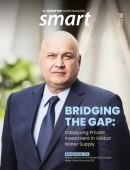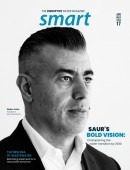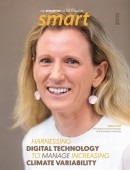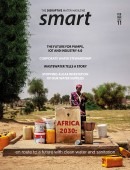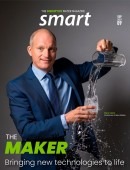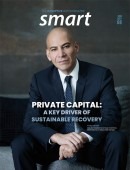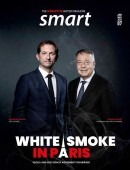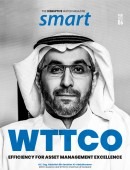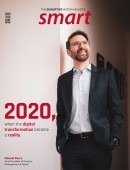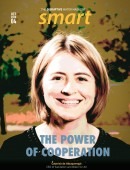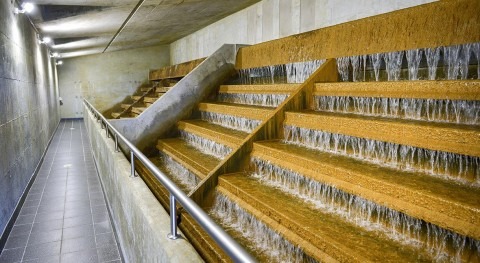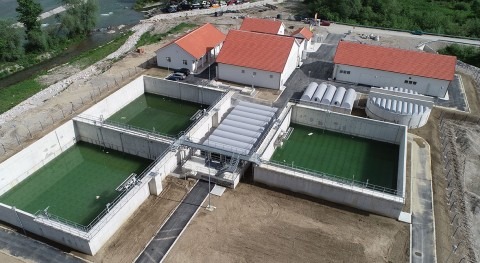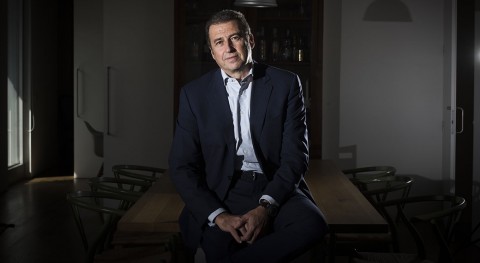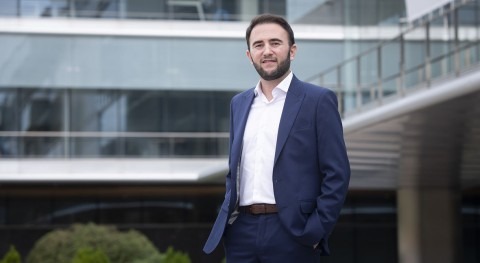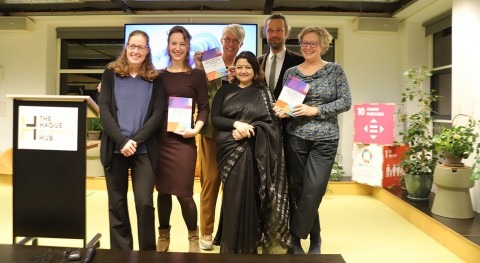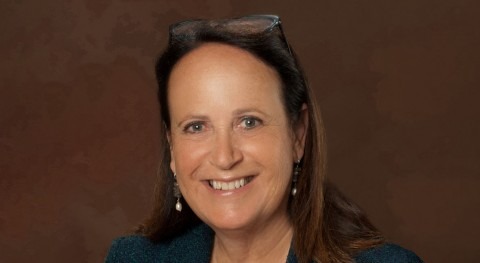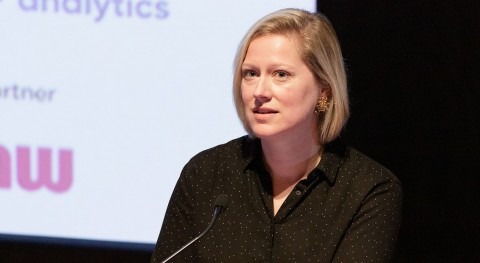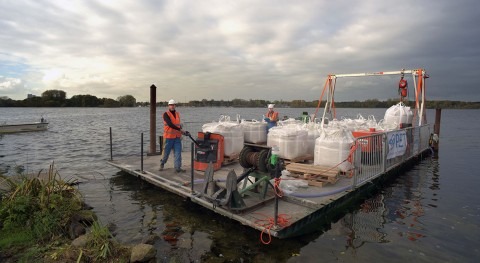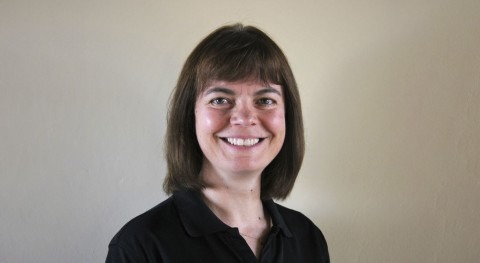Featured content
Content summary
We release the last issue of 2022 of Smart Water Magazine Bimonthly, dedicated to business. Our cover features Jorge Malfeito, Director of Innovation of the water business at ACCIONA. In an exclusive interview with Smart Water Magazine, he discusses the company’s research and innovation strategy and how it contributes to ACCIONA’s water business. We also interview other water business leaders, including Ignacio Morcillo, who discusses how Minsait is supporting the water sector as it goes digital, and Noam Komy, the CEO of Miya, on the company’s most recent trajectory and future business plans. Moreover, you will not want to miss our interview with Jenniver Sehring, Senior Lecturer in Water Governance and Diplomacy at IHE Delft, on gender dynamics in transboundary water governance. This issue also touches on different aspects of water treatment: Carlos Cosín, CEO of Almar Water Solutions, takes stock of his time at the IDA and speaks about the future of desalination; Jo Burgess, Managing Director South Africa & Head of Trial Reservoir at Isle Utilities, discusses strategic water management for the mining sector, and Phoslock Environmental Technologies presents their solution to remove excess phosphorous from water bodies. It's impossible to mention here all the content that awaits you inside, but this time we outdid ourselves with the interviews, so please read on: you will find this and a lot more in Smart Water Magazine Bimonthly 15.
Features
Aqualia has recently participated in several international events, where discussions focused on the sustainability of public services.
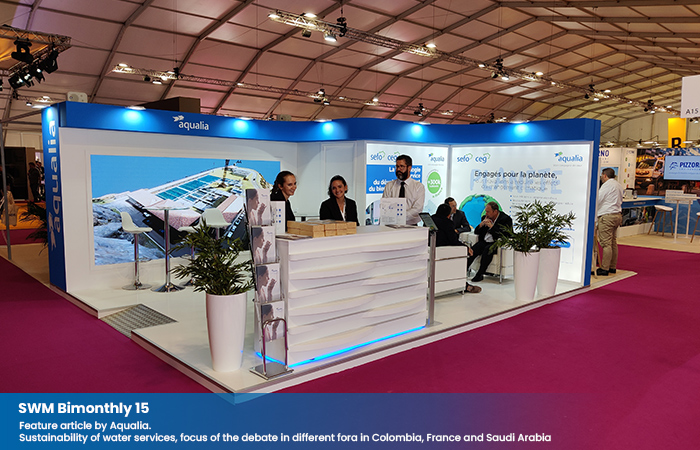
SEKO provided a safe, reliable, cost-effective solution to meet a customer’s needs concerning Legionella compliance in water systems.
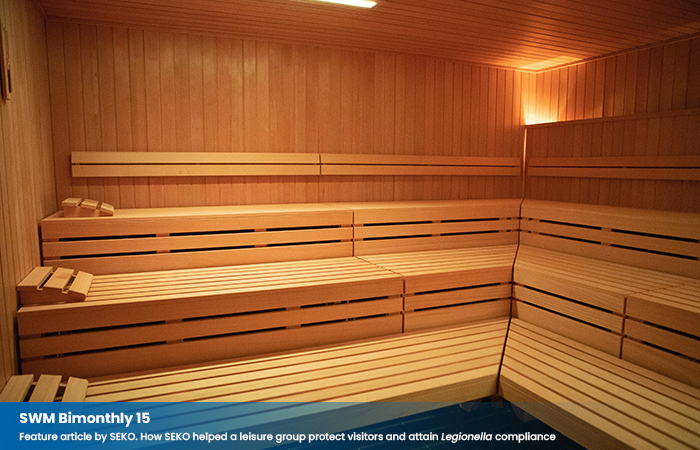
In this case study, Brønderslev Water Company (Denmark) reduced NRW thanks to a water loss management solution by Diehl Metering.

Hidroconta works with French partner Hydralians supplying IRIS equipment to support digitalisation in France’s water market.
-to-digitalise-water-networks-with-IRIS-700.jpg)
Agenda21500 presents its core business: Interim Project Management, and introduces several projects completed in the Balkan region.
Interviews
Interview with Jorge Malfeito, Director of Research, Development and Innovation of the water business at ACCIONA
- Decarbonisation, circular economy, sustainable infrastructure and a positive impact on the planet are major themes in ACCIONA’s projects
- We do an analysis to identify global trends and priority lines of action related to sustainability and innovation in the water sector
- Our department is responsible for identifying and highlighting all innovative activity and also for the Strategic Innovation Plan
- Through open innovation, we explore the co-creation of solutions and new sustainable value propositions to address strategic challenges
- Our intrapreneurship initiative nurtures staff’s professional development through multidisciplinary collaboration, encouraging teamwork
- The ultimate goal is that the results of our projects constitute a fundamental technological base to have a competitive advantage

Interview with Ignacio Morcillo, Business Development Manager – Water at Minsait (Indra)
- Transparency with the user is fundamental for progress in the water sector. We must make it visible and value the sector’s activity
- Supporting companies in their digital transformation is essential to obtain the desired results and manage change
- At the water unit, we identify the needs of our individual clients, to help them prioritise and undertake their digitalisation projects
- Minsait is allocating more resources to advance the sector, adapting the entire portfolio of solutions to the new market demands
- Oblysis technology can reduce the energy consumption of the biological process of activated sludge in a WWTP by up to 40%
- Two years ago, with the acquisition of the company SIA, cybersecurity became one of Minsait’s strategic commitments
-700.jpg)
Interview with Noam Komy, CEO of Miya
- This summer we decided that after such an increase in value, it is time for us to exit from that investment and seek new opportunities
- We will also seek new opportunities to do what we did in Indaqua, making a good water company a great water company
- Our biggest challenge is to convince the water industry and decision makers that efficiency is the most important challenge we face
- We aim to explore new markets such as the MENA region, South East Asia, LATAM and some new countries in Europe like Greece
- This summer we invested in an Israeli technology company, Xfloat, dedicated to providing floating PV system solutions

Interview with Jenniver Sehring, Senior Lecturer in Water Governance and Diplomacy, IHE Delft Institute for Water Education
- We brought together more than 100 researchers and practitioners from around the globe and the conference sparked the idea of a book
- Female experts share their experiences in transboundary water policy processes or on efforts to implement gender mainstreaming policies
- In general, women become more visible once the water issues are not “high politics”, but rather an environmental issue – soft politics
- One of the challenges is that gender inequalities are ingrained in practices, private and professional socialization and cultural norms
- Transformational change that tackles structural obstacles and challenges traditional understandings and business-as-usual is needed
- There are good examples of targeted programmes for female water professionals, like SIWI’s Women in Water Diplomacy Network
Interview with Kate Waters-Hart, Group Manager, Aquatic Science and Damian Whelan, General Manager for UK & Europe. Phoslock Environmental Technologies
- A vast amount of scientific evidence has shown that Phoslock® poses a negligible risk to both aquatic biota and to human health
- To understand if Phoslock® is a suitable solution to improve water quality, we undertake an assessment of water chemistry and sediments
- Phoslock® is an excellent solution to control the phosphorus released from sediments that have entered the system through years/decades
- Climate change and catchment loading from population growth and land use can increase the rate of external phosphorus loading to lakes
- In early November 2022, Phoslock Environmental Technologies Limited announced a partnership arrangement with SSI Services (UK) Limited
Interview with Jo Burgess. Managing Director South Africa & Head of Trial Reservoir at Isle Utilities
- Almost all of the water challenges in the mining industry can be distilled down to one of two things: too much water or not enough
- Typically, if they don't affect the core business, expenditure on water supply and discharge issues become a very low priority
- Water shortages and the risk of running out of correct quality water are the greatest risks driving innovation in the mining sector
- The mining industry itself needs to be much more open and willing to communicate bad news as well as good news
- Mine closure and mitigating the water risks associated with closure need to be brought in at the beginning, at the exploration stage
- “Mining” of above ground dumps will provide us with metals while dealing with the environmental legacy of older mining practices

Interview with Jorge Helmbrecht, Business Development Manager, Idrica
- The digital transformation of a company comprises three key aspects: the processes to be transformed, the people, and the technology used
- The success of this digitalisation journey is the basis for Idrica to offer its experience and technological solutions for the water cycle
- The digitalisation strategy in countries with different technological maturity must ask what the smartest way is to leverage existing resources
- Data, as well as the information they provide, have ceased to be fungible material and have become a tangible asset within companies
- The water sector cannot afford to remain oblivious to current digital transformation processes and the concrete benefits they entail
- There must be an assessment of the initial state and a final picture of the goal to be achieved, to follow the appropriate roadmap
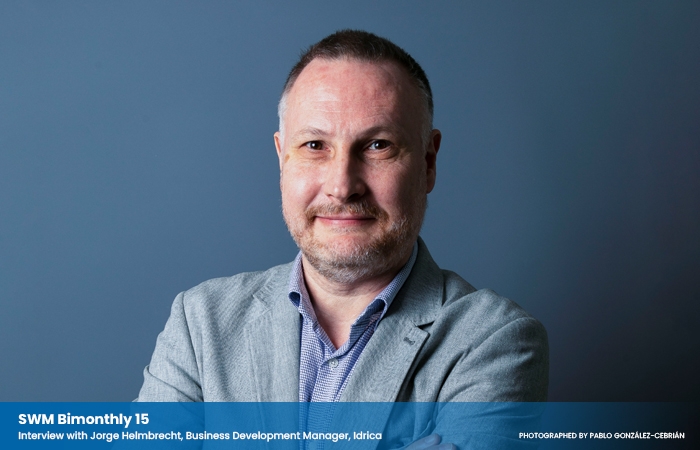
Interview with Carlos Cosín, CEO of Almar Water Solutions
- I have promoted important changes in the management and direction of the association, including the change of the secretary general
- We have focused our efforts on new communication tools that give greater visibility to the work that is being done inside the Association
- We realized that what we were missing in the association were the end customer, the utilities and the big industrial consumers
- Non-conventional water resources that used to be focused on municipal frameworks, now have a large presence in the industrial sector
- The UN has recognized for the first time that the generation of unconventional resources is a key tool in the fight against climate change
- New ideas are being developed to eliminate or mitigate brine rejection and at the same time take advantage of the extraction of minerals

Interview with Lindsey Brown, Australian Market Leader, Water at GHD
- If we can stay curious just a little bit longer (which sometimes requires humility), that’s where we create space for innovation to emerge
- In Australia, most organisations in the water industry have embraced the challenges of liveability and climate unpredictability
- There is more we can learn from other sectors when it comes to agility in decision making and having the risk appetite to make bold moves
- Floodwater and stormwater are managed differently to potable water and wastewater, but it’s all part of the same cycle
- In a water industry that loves concrete and pipes, we are starting to see more regenerative design and nature-based solutions emerge
- The next step is to help the community and private sector outside the water industry understand the connection between climate and water

Interview with Valentin Post, CEO, FINISH Mondial
- We involve all the stakeholders in the sanitation ecosystem with the aim of providing toilets for those who need them most
- The sanitation sector relies heavily on government subsidies, which is unsustainable: 2.5 bn people don’t have access to a safe toilet!
- In urban settings, we work with and develop the capacities of sanitation entrepreneurs to collect and transform the human waste
- Human waste is a major contributor to greenhouse gas emissions; when human waste is not stored properly it releases methane into the air
- Asking farmers to use products made from human waste or asking consumers to buy food grown in human waste is not without its challenges
- When you try to implement these concepts, you find many human-made obstacles that prevent circular sanitation from becoming standardised

Interview with Kirsten James, Senior Program Director, Water at Ceres
- We work with investors to increase water risk integration into decision-making via resources such as the Investor Water Toolkit
- We launched the Valuing Water Finance Initiative in August with 64 investor signatories representing $9.8 trillion in assets
- Ceres will periodically conduct a benchmark analysis to assess and track progress on the water risk management practices of companies
- It's impossible to significantly advance climate action and water security without stronger private sector leadership

Interview with Felicia Marcus, Interview with Felicia Marcus, William C. Landreth Fellow, Stanford University Water in the West Program, Founding Member, Water Policy Group
- There are many achievements accomplished because of the Clean Water Act, which is possibly the most successful environmental statute
- We need far more to retool to deal with aging infrastructure, the chemicals of emerging concern, and to deal with non-point sources
- We put over $1.5 billion in grants and loans into water recycling projects to get them off the drawing board and into construction
- I finished a big project on the intersection of state climate policy and nature-based solutions that yield multiple benefits, especially for water
- Water has a role in clean power production and better operation of water and wastewater treatment plants can also mitigate climate change
- Drinking water and water quality in the environment are enormous and growing ever more important and challenging as science evolves
Opinion articles
Alessio Giardino, Senior Water and Climate Change Specialist at the Asian Development Bank
Andrew Hollister, CISO at LogRhythm
Dr Katrin Schuhen, CEO at Wasser 3.0 gGmbH
Emilio Gabbrielli, Independent International Advisor
Luis Navarro, Business Development Manager at HACH
Magne Eide, Chief Commercial Officer, InfoTiles
Maria Elena Rodríguez Hernández, Water Engineering Director, R&D - Engineering at Ingeteam
Zijie “Beryl” Xia, Lead Scientist at Claros Technologies
Dr Alesia Ofori, Research Fellow in Water and Sanitation Governance - School of Politics and International Studies, University of Leeds


